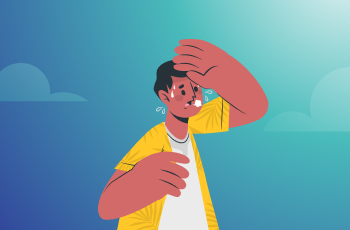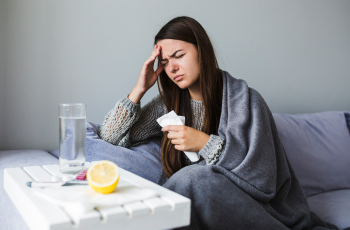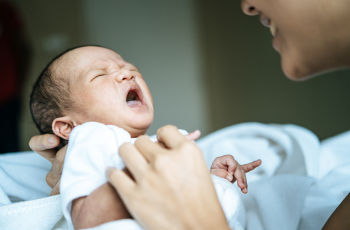When you’re a parent, a few things send you into action mode quicker than seeing your child unwell. The combination of a fever and a rash can be particularly alarming and raises immediate questions about the best course of action. Should you rush to the GP, or can some quick home remedies do the trick? Maybe a telehealth consultation would be adequate? This blog aims to unpack these questions, providing you with the knowledge to manage such symptoms effectively at home and understand when to seek professional help.
Understanding the potential causes and treatments of fever and rash in children empowers you to make informed decisions about their health. While home remedies and telehealth can be excellent first steps for non-urgent symptoms, recognising severe cases like meningitis is crucial for seeking timely medical intervention. Remember, you know your child best, and if your instincts say something's amiss, a visit to the GP may be warranted. Stay informed, stay observant, and never hesitate to reach out for professional advice when necessary. Your role in their health is pivotal and proactive steps can ensure their swift recovery and continued well-being.
Causes of fever and rash in children
A fever is often your child’s body's primary response to an infection, acting as a natural defence mechanism to fight off invaders. Fever accompanied by a rash could point to several conditions such as viral infections like chickenpox or measles, bacterial infections such as scarlet fever, and reactions to a new medication.Symptoms of fever and rash in children
The symptoms can vary, but typically, a fever will make your child feel warmer than usual, with body temperatures exceeding 37.5°C. The rash could be from small, pinpoint spots to large welts on the body. It may also differ in colour and texture, appearing flat or raised, and sometimes being itchy. Speak to an expert telehealth doctor to understand the causes of fever and rash in your child.Identifying the illness: Differentials for fever and rash in children
Understanding the specific illness causing these symptoms often involves identifying other accompanying signs. For instance, if the rash develops after the fever and appears as flat, red spots that do not turn white when pressed (that is, it doesn't blanche - a simple method to check is to use a glass and press on it), it might be indicative of meningitis, which requires immediate urgent medical assessment.Common childhood illnesses and their differential diagnoses
Roseola (Sixth disease): Typically affecting children between 6 months and 2 years, roseola starts with a sudden high fever followed by a pinkish rash once the fever subsides. Measles: Known for its signature symptoms including a blotchy rash, fever, runny nose, cough, and Koplik's spots inside the mouth. Scarlet fever: Begins with a fever and sore throat, followed by a rough, red rash that feels like sandpaper. Slapped cheek syndrome (Fifth's disease): Caused by human parvovirus B19, it looks like an intensely red rash on the cheeks associated with a fever. Common during the winter and spring seasons, it is spread through respiratory droplets.Managing symptoms at home: Effective treatments
If your child is generally well apart from the fever and rash, managing symptoms at home might be a suitable approach. However, if the rash is non-blanching and is associated with a fever, you must consult a doctor immediately. Here are some tips: Keep hydrated: Fever can dehydrate children quickly, so offer plenty of fluids. Rest: Ensure they rest as fighting off infections can be exhausting. Fever management: Use child-specific anti-fever medications like paracetamol or ibuprofen to reduce fever and relieve discomfort. Skincare: If the rash is itchy, calamine lotion or hydrocortisone cream can provide relief.The role of telehealth: Can a telehealth doctor help?
Telehealth has proven invaluable for assessing non-emergency conditions like a fever with a rash. It saves a trip to the GP and provides quick access to advice. During a telehealth appointment, an online doctor can evaluate your child’s symptoms, recommend treatment, and even decide if further medical tests or in-person visits are necessary.Frequently Asked Questions
What childhood illness causes a fever and then a rash?
Roseola (Sixth Disease) is a prime example, where a high fever lasting several days is followed by a rash as the fever subsides.What is a differential diagnosis for a rash with a fever?
Some differential diagnoses include measles, roseola, slapped cheek syndrome, scarlet fever, chickenpox, meningococcal infection, and allergic reactions. The specific diagnosis often depends on other symptoms and the rash's appearance.What is a differential diagnosis for a childhood rash?
Beyond infections and in the absence of a fever, consider allergic reactions, eczema, and even heat rashes, especially if accompanied by specific triggers like new foods or hot weather.What does a meningitis rash look like?
A meningitis rash appears as pin prick-sized red dots, or purple spots that don't fade under pressure (blanche) using the glass test as described above. This type of rash requires immediate medical attention.Understanding the potential causes and treatments of fever and rash in children empowers you to make informed decisions about their health. While home remedies and telehealth can be excellent first steps for non-urgent symptoms, recognising severe cases like meningitis is crucial for seeking timely medical intervention. Remember, you know your child best, and if your instincts say something's amiss, a visit to the GP may be warranted. Stay informed, stay observant, and never hesitate to reach out for professional advice when necessary. Your role in their health is pivotal and proactive steps can ensure their swift recovery and continued well-being.












 Facebook
Facebook Instagram
Instagram LinkedIn
LinkedIn


